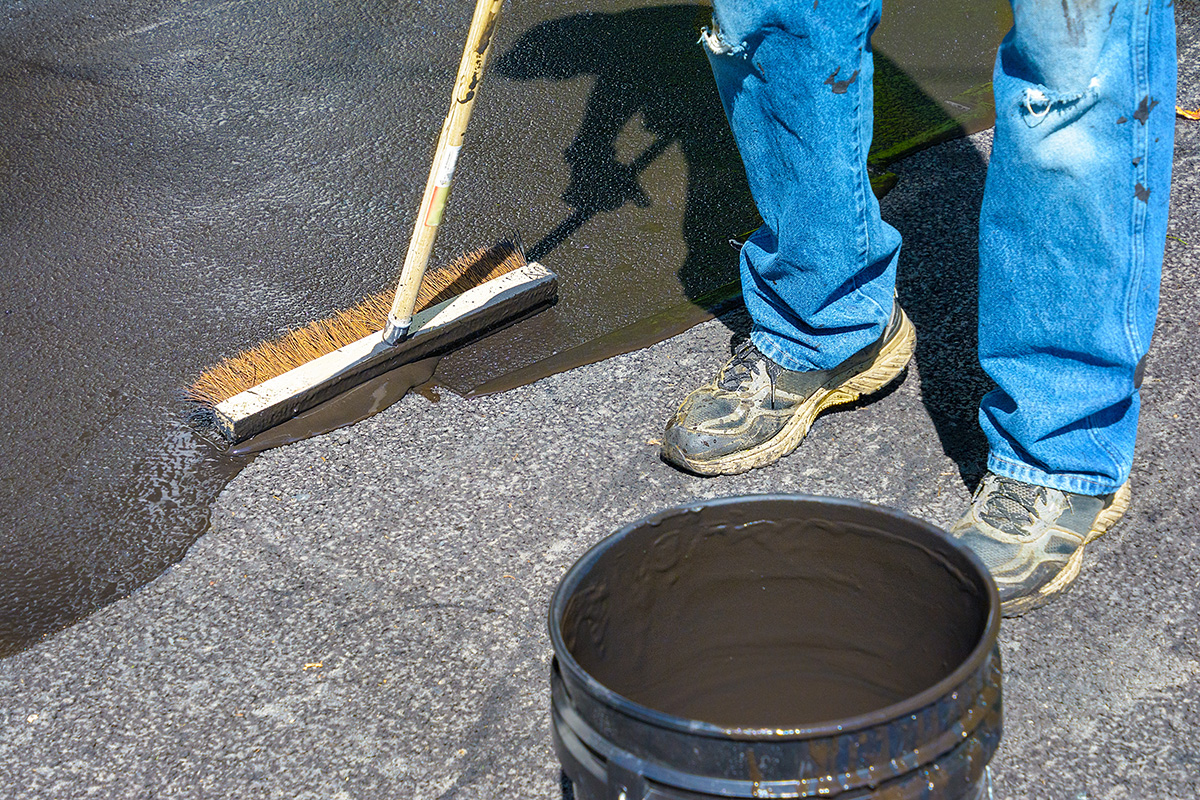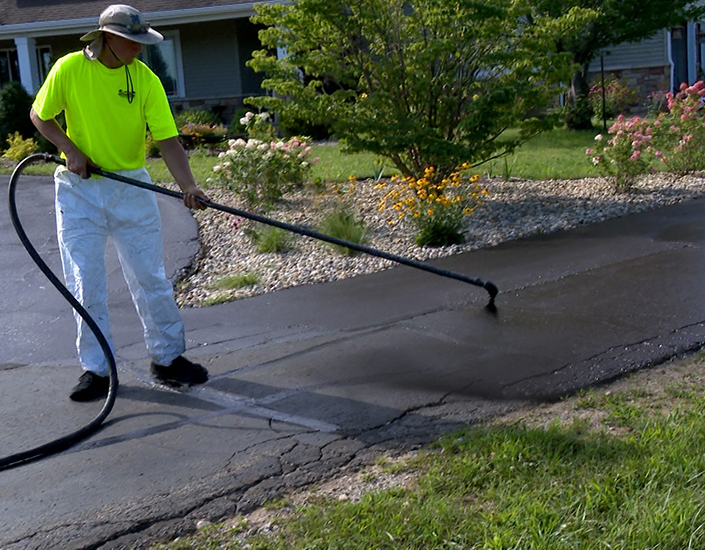Transform Your Property's Visual appeals: Commercial Parking Lot Paving and Asphalt Sealing Solutions
Transform Your Property's Visual appeals: Commercial Parking Lot Paving and Asphalt Sealing Solutions
Blog Article
Warm Mix Asphalt: A Lasting Option for Sidewalk
Warm Mix Asphalt (HMA) has become a leading sustainable choice for pavement services, providing a myriad of environmental advantages and cutting-edge innovations. Its capability to lower and reuse materials energy consumption provides a compelling situation for its adoption in roadway building and construction tasks. The lasting performance and longevity of HMA make it a preferred option for infrastructure advancement. As the demand for environment-friendly building methods expands, checking out the subtleties of HMA's sustainability can supply important insights right into the future of pavement options.
Ecological Benefits of Warm Mix Asphalt

Additionally, Warm Mix Asphalt assists to alleviate metropolitan heat island results. Its dark shade soaks up sunlight, minimizing the quantity of heat showed back into the atmosphere compared to lighter-colored pavements. This can decrease ambient temperatures in urban areas, decreasing the need for cooling and inevitably minimizing power intake.
On top of that, Hot Mix Asphalt contributes to enhanced stormwater management. Its porous nature enables water to infiltrate the pavement and charge groundwater materials, minimizing runoff and the threat of flooding. These ecological advantages make Warm Mix Asphalt a sustainable option for paving roads and freeways.
Power Efficiency in HMA Manufacturing
Is power efficiency a critical aspect in the manufacturing of Hot Mix Asphalt (HMA)? Power plays a substantial duty in the production of HMA, impacting both expense and environmental sustainability. One vital facet of energy efficiency in HMA production is the use of cozy mix asphalt (WMA) innovations.
Moreover, improvements in plant innovations have actually led to more energy-efficient HMA manufacturing processes. By maximizing power use in HMA manufacturing, the industry can decrease its carbon footprint while preserving high-quality sidewalk materials.
Recyclability of Warm Mix Asphalt
The recyclability of Warm Mix Asphalt (HMA) is an essential element of its sustainability and lasting environmental influence. HMA is one of the most recycled materials in the United States, with over 100 million tons of reclaimed asphalt pavement (RAP) being reused every year in brand-new sidewalk building and construction. Reusing HMA offers several ecological advantages, such as decreasing the need for virgin products, reducing energy intake throughout manufacturing, and lowering the quantity of waste sent out to landfills.
The procedure of reusing HMA includes grating the existing pavement, squashing it right into smaller pieces, and mixing it with new aggregate and asphalt binder to produce a recycled mix. This recycled mix can usually execute in addition to or also much better than conventional HMA, while needing less resources and generating lower greenhouse gas exhausts. By including RAP into new pavement jobs, roadway firms can preserve all-natural sources, minimize prices, and reduce the ecological impact of road construction and maintenance activities. Generally, the recyclability of HMA plays a substantial duty in advertising sustainable methods my website within the sidewalk industry.

Long-Term Performance of HMA
Asphalt pavements demonstrate longevity and durability over a prolonged duration, showing the lasting performance of Hot Mix Asphalt (HMA) The long life of HMA can be attributed click here for more to its capability to endure rush hour tons, harsh weather, and the results of aging. Researches have shown that properly designed and appropriately created HMA sidewalks can last for 20 years or more with regular maintenance. The key to making the most of the long-lasting performance of HMA hinges on making use of top quality products, following ideal techniques in construction, and implementing reliable upkeep approaches. Correct drainage, routine evaluations, and timely repairs are important for preserving the structural honesty of HMA sidewalks gradually. In addition, innovations in HMA technology, such as making use of polymer-modified binders and cozy mix asphalt, have additionally enhanced the durability and durability of HMA pavements. By prioritizing high quality building and construction and upkeep practices, HMA remains to confirm itself as a sustainable and economical remedy for resilient pavement infrastructure.

HMA: Sturdiness and Sustainability
Demonstrating both sturdiness and sustainability, Hot Mix Asphalt (HMA) has ended this up being a foundation in the building and construction of resilient sidewalk frameworks - hot mix asphalt. HMA's durability comes from its ability to hold up against hefty tons, severe climate condition, and high traffic quantities, making it a reliable option for streets, freeways, and airport runways. The make-up of HMA, which commonly includes aggregates, binder, and filler, plays a crucial function in boosting its durability and resistance to damage
Additionally, HMA's sustainability exists in its recyclability and energy-efficient production procedure. The capability to reuse redeemed asphalt pavement (RAP) in brand-new HMA mixes decreases the need for virgin products and minimizes the environmental influence of sidewalk building and upkeep. Additionally, the energy efficiency of creating HMA lies in its reduced mixing temperatures compared to other pavement materials, bring about decreased power usage and greenhouse gas emissions.
Final Thought
In verdict, warm mix asphalt (HMA) supplies a sustainable option for pavement with its eco friendly features. HMA's recyclability, energy performance in production, and long-lasting toughness make it an environmentally friendly option for road building and construction.
HMA is one of the most recycled products in the United States, with over 100 million loads of recovered asphalt pavement (RAP) being recycled every year in brand-new pavement building and construction.The process of recycling HMA entails milling the existing pavement, squashing it right into smaller pieces, and mixing it with new accumulation and asphalt binder to create a recycled mix.Asphalt pavements show resilience and resilience over a prolonged duration, mirroring the lasting efficiency of Warm Mix Asphalt (HMA) Additionally, improvements in HMA modern technology, such as the usage of polymer-modified binders and cozy mix asphalt, have additionally enhanced the durability and durability of HMA pavements. The ability to reuse recovered asphalt sidewalk (RAP) in new HMA combinations decreases the demand for virgin products and minimizes the environmental influence of sidewalk construction and upkeep.
Report this page